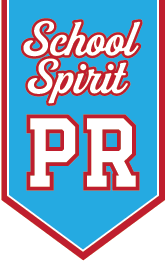
The phrase “Location, Location, Location” is commonly associated with real estate, emphasizing the importance of where a property is situated, but location also matters for school communcation. School leaders must thoughtfully consider the location where they share information, whether through owned media or shared media.
Understanding Owned and Shared Media
Owned media comprises channels entirely under the control of a school or district. These can include the school’s website, email lists, and newsletters. Such platforms provide school leaders with complete authority over the content they publish.
In contrast, shared media encompasses platforms controlled by third-party providers. Examples of shared media include social media platforms such as Facebook, X (formerly Twitter), and Instagram. These platforms offer wide-reaching communication potential but come with limitations.
One of the most compelling advantages of owned media channels is the level of control they afford. School leaders can ensure the information they share is accurate, timely, and relevant. They also can choose the tone and language that best represents their school and message.
Targeting Specific Audiences
Another significant benefit of owned media is the ability to target specific audiences. School leaders can segment email lists and tailor website content to ensure that different messages reach distinct stakeholder groups. This level of targeting is challenging to achieve on social media platforms, where posts are typically visible to all followers or fans.
Owned media channels provide a permanent record of school communication. Content published on the school’s website or sent via email becomes part of a searchable archive. This feature is invaluable for legal or regulatory compliance, such as meeting notice requirements or policy change documentation.
The Role of Shared Media
While social media has a role in school communication for community-building and casual updates, it should be viewed as a supplement to owned media channels. School leaders should prioritize owned media for essential information.
Owned media channels, such as school websites and email lists, offer unmatched control, targeting, and permanence. While social media platforms can serve as valuable supplements, school leaders must ensure their most critical messages are shared in the correct location. When it comes to school communication, location truly matters.







